|
You are receiving this email because you signed up for the monthly ASI Newsletter.
If you no longer wish to receive these emails you can unsubscribe here.
|
|
|
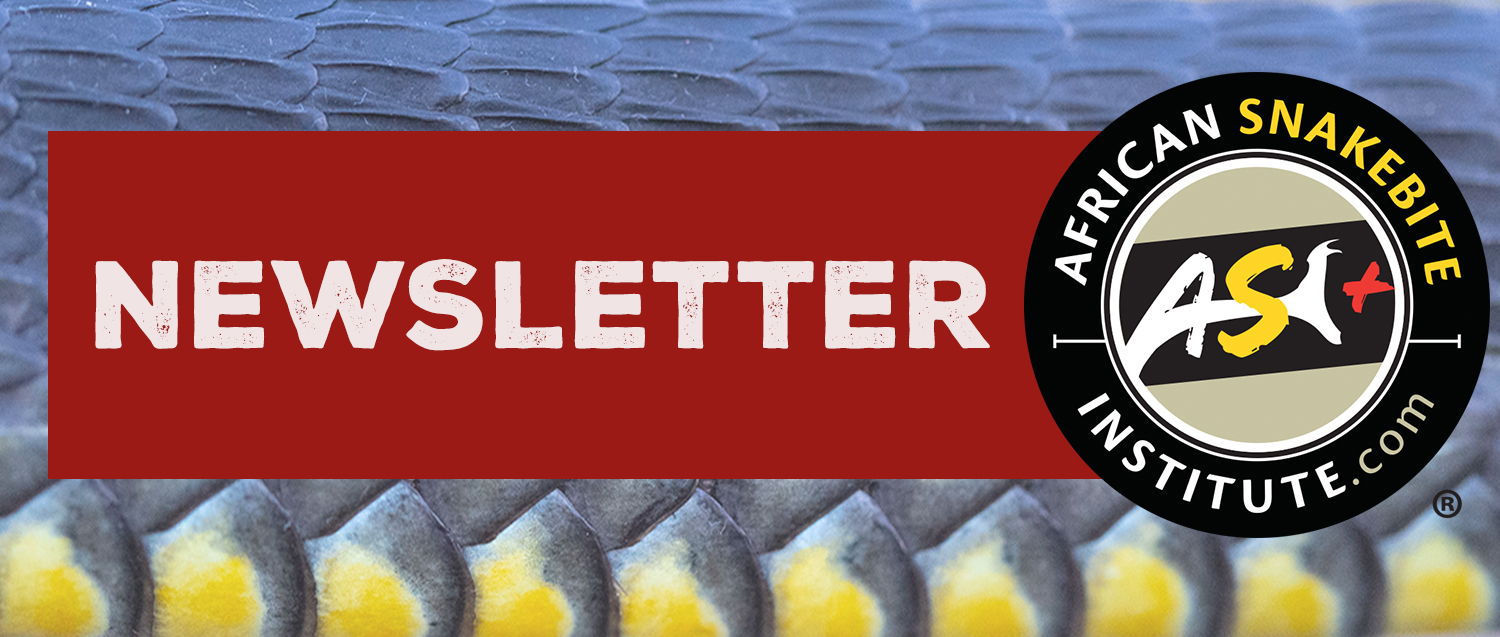 |
|
October 2025 - Pythons of Africa
|
|
|
|
Pythons are large, charismatic snakes, well-known for their constricting ability. All of the large constrictors such as Pythons, Boas and Anacondas are found in either the family Pythonidae or Boidae. There are ten species found in the genus Python – these snakes are distributed across Asia and Africa. One of the most well-known species being the Burmese Pythons (Python bivittatus) which are common in the pet trade – especially the yellow and white albino forms. Within the family Pythonidae, Reticulated Pythons (Malayopython reticulatus) are the largest snakes with a length of around 7.5 meters. In Africa, the largest python is the African Rock Python (Python sebae) with females reportedly reaching 6.5 meters in length.
There has been some confusion across Africa on the python species. There are currently four species of pythons found across Africa. You’ll find more information on these four species below.
|
|
|
 |
|
|
|
A large skin of a Southern African Python (Python natalensis). Bear in mind that both shed skins and skins removed from dead snakes can stretch up to 40%. The above snake was probably under 4 m in length.
|
|
|
|
African Rock Python (Python sebae)
Description – a large, robust snake with a distinct head. Females can reach 6.5m in length and there are unconfirmed, anecdotal records of specimens measuring 9 m! Colour is camouflaged shades of brown, black and tan. A distinct, pale, tan line extends from the snout, down the length of the head above each eye. There is also a pale upside-down V-pattern below each eye. The scales on the top of the head, especially on the top of the snout, are large and a good feature to tell this species apart from the Southern African Python.
Distribution – found in Central, West and East Africa from northern Angola to Kenya and across to Senegal. Generally found in thick forest or moist savanna.
History – described in 1789 by Johann Friedrich Gmelin, a German naturalist, chemist, botanist, entomologist, herpetologist, and malacologist. He saw plates painted in work by Albertus Seba, a naturalist who visited West Africa. Gmelin named the species after Albertus – Python sebae
|
|
|
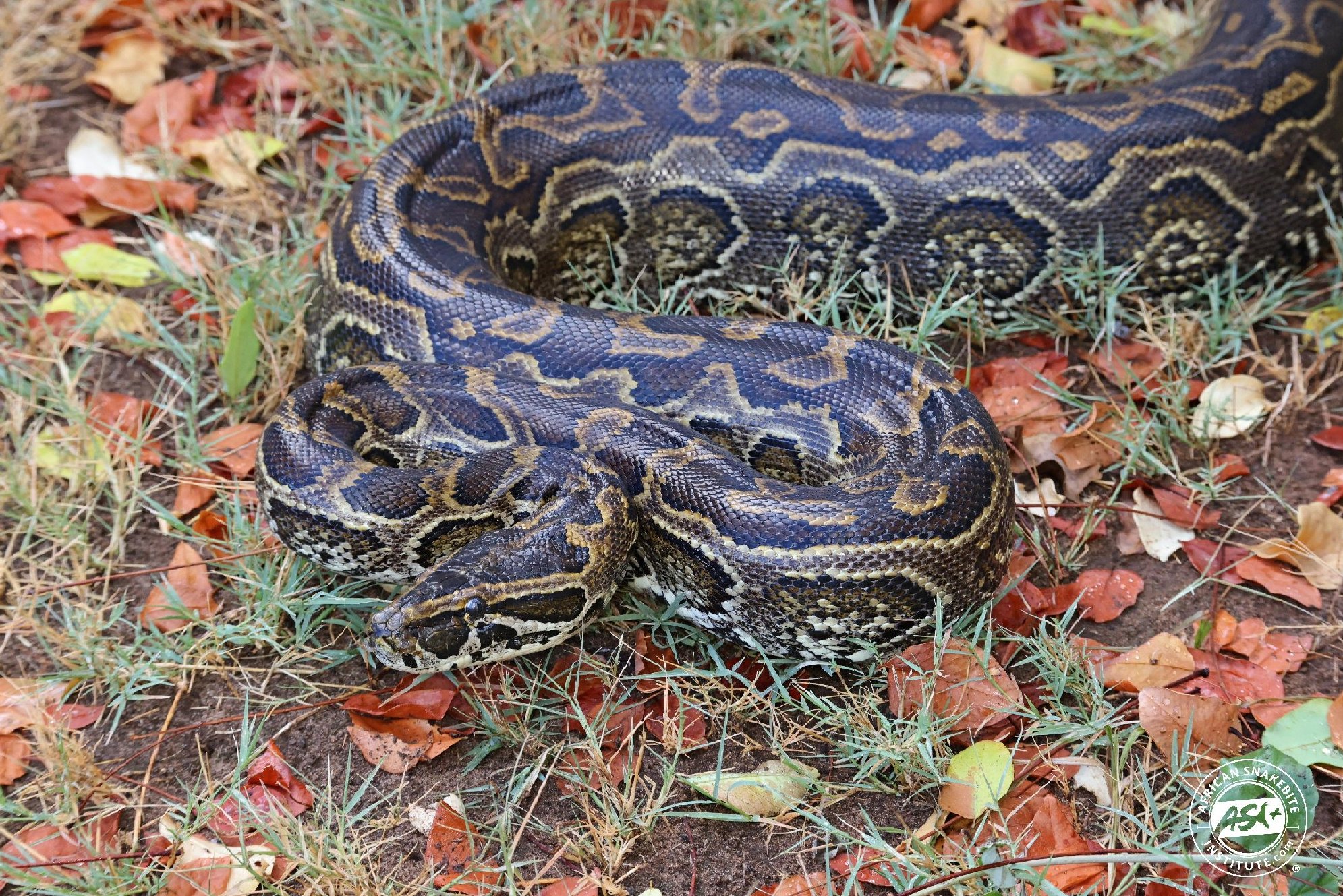 |
|
An adult African Rock Python (Python sebae) from central Kenya. Note the prominent markings on the head.
|
|
|
|
|
New Arrival Alert!
Say hello to the latest addition to the ASI T-shirt range — the ASI Puff Adder T-shirt!
This bold design is printed on a premium 160g black cotton crew neck for all-day comfort and style.
Grab yours while stocks last!
Price R350.00
|
|
|
| Order online here |
|
|
|
Southern African Python (Python natalensis)
Description – a large, robust snake with a large head. Females can reach 5.5m in length, but males are generally under 4.5m. Colour consists of shades of brown, black and tan often with a pale stripe down the center of the tail. There is a pale V pattern on the top of the head, extending above each eye. A dark stripe extends across the eye down the sides of the head. Scales on the top of the head are uniform in size and smaller than those of the African Rock Python.
Distribution – found in savanna regions of southern Africa, extending to northern Angola, southern DRC and southern Kenya.
History – originally described by Sir Andrew Smith from Port Natal (Durban) in 1840. Smith only makes mention of the name Python natalensis and doesn’t give any description of the species or reference to a specimen or museum material. The species was therefore not accepted in 1840 and was considered a synonym of Python sebae. By the 20th century it was considered a subspecies, Python sebae natalensis, but was elevated to full species by the late Donald Broadley in 1999, where he gave a formal description of the species and range.
|
|
|
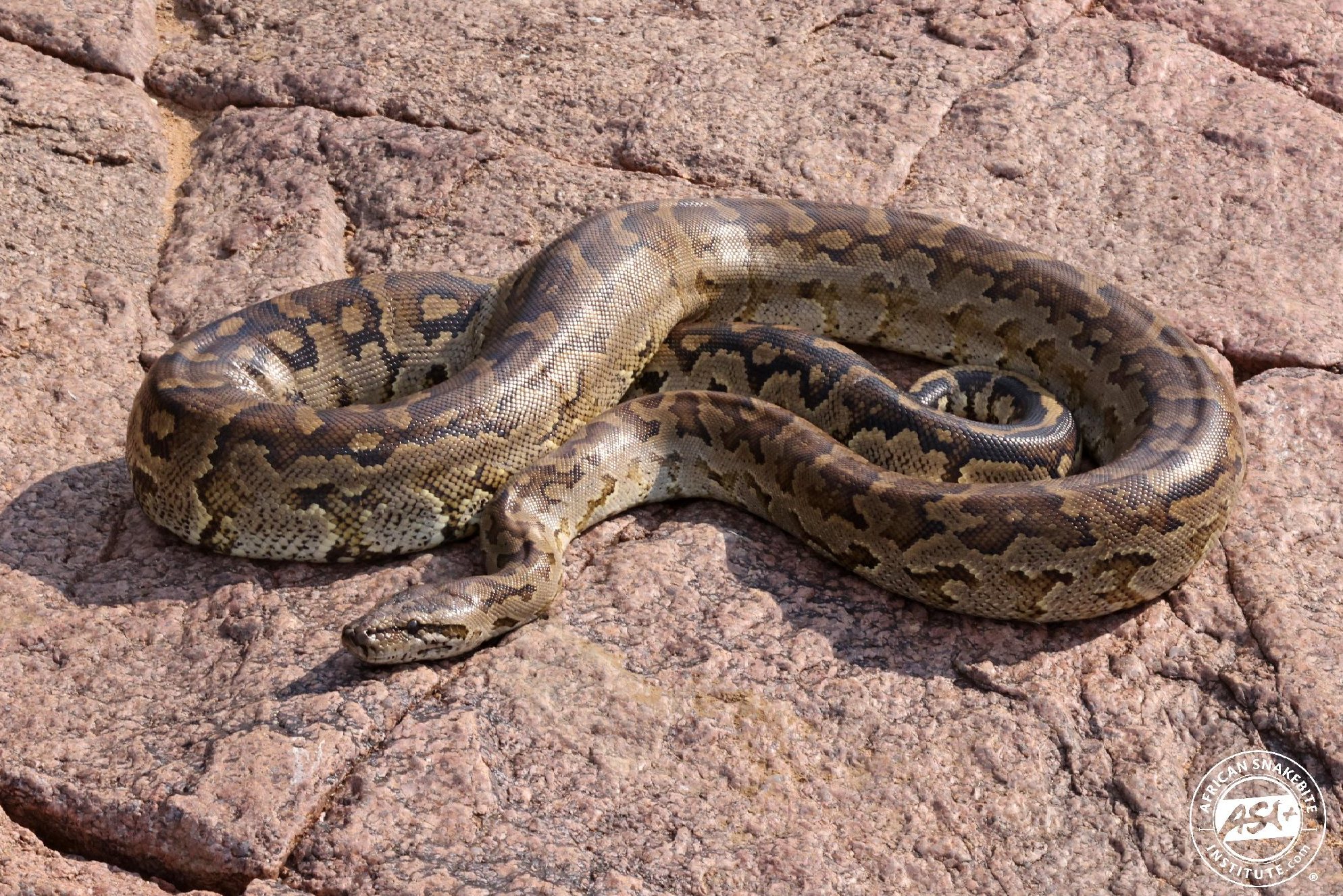 |
|
|
|
A subadult Southern African Python (Python natalensis) from Pretoria, South Africa.
|
|
Anchieta's Dwarf Python (Python anchietae)
Description –an attractive, smaller python reaching lengths of 1.8m in females. Colour consists of light brown with dark-edged pale patterns across the body. A pale stripe extends above each eye, meeting at the back of the head. The scales are small and form a bead-like texture on the body.
Distribution – found in south-western Angola and north-western and central Namibia.
History – described in 1887 by José Vicente Barbosa du Bocage, a Portuguese zoologist, politician, and professor. The first collected animal was found in Catumbela, near Lobito, Angola. The type specimen was destroyed in the fires of 1978 that engulfed the National Museum of Natural History and Science in Lisbon, Portugal. Bocage named the species in honour of José Alberto de Oliveira Anchieta, a 19th-century Portuguese explorer and naturalist, who travelled extensively in Portuguese Angola, collecting animals and plants, which he sent to the museum in Lisbon.
|
|
|
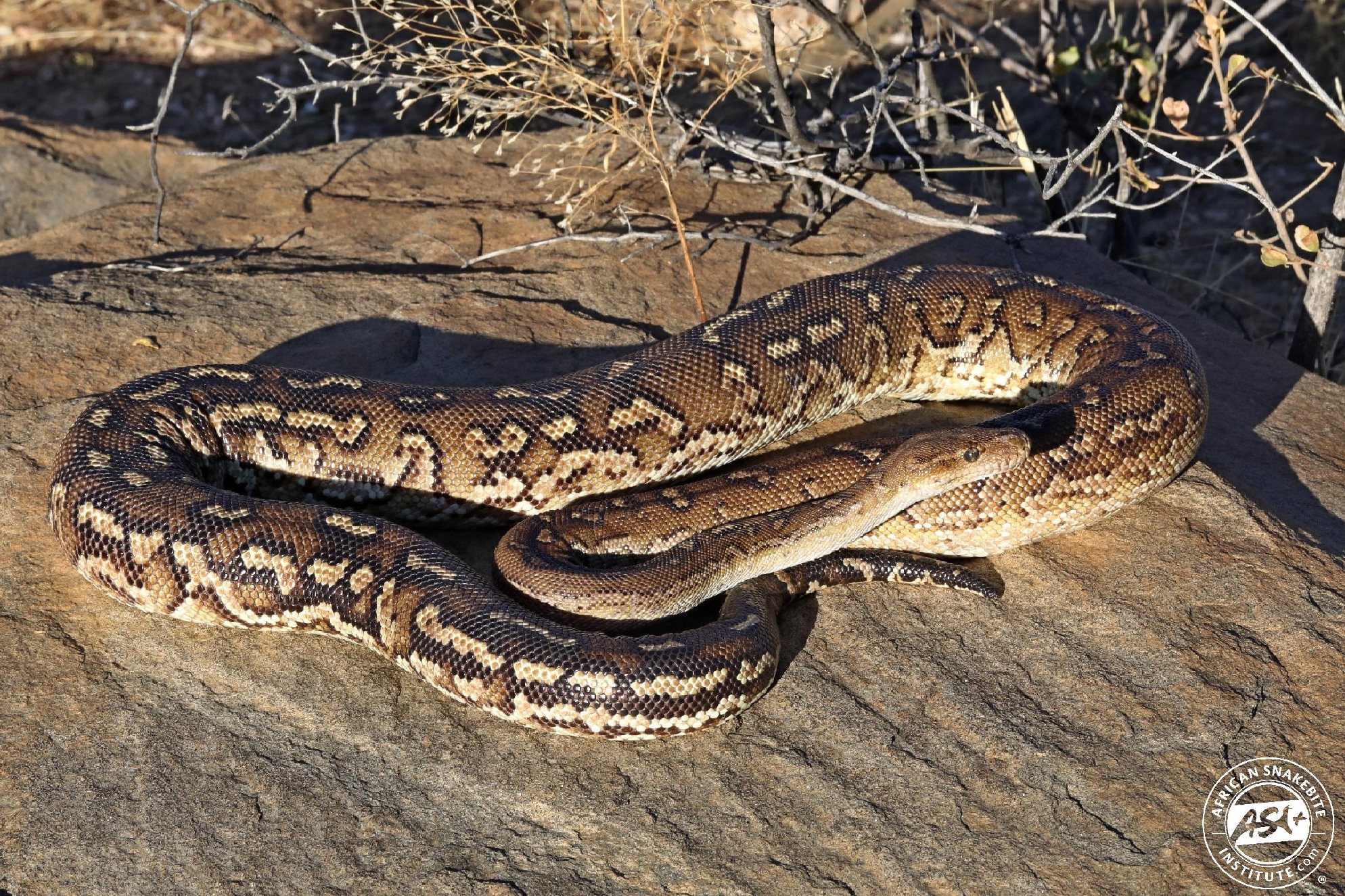 |
|
Anchieta's or Angolan Dwarf Python is a smaller species found in central Namibia northwards into southern Angola.
|
|
|
|
Ball/Royal Python (Python regius)
Description – a small python reaching 1.5 meters in length. Colour is tan to brown, with dark, camouflaged blotches and patterns. A pale stripe extends along the head, above each eye with another dark stripe extending across the eye.
Distribution – a West African species found from Senegal through to Nigeria, but extending all the way to the western edge of Uganda.
History – the species was described by George Shaw, an English botanist and zoologist, in 1802. The first specimens were collected in the Gambia. The species is named after the Latin rex, regis = king. This species was apparently often kept as a pet by African kings and other rulers due to its calm and shy nature. They are frequently exploited for their skin, meat and for the pet trade, making this species one of the most exported reptiles out of West Africa.
|
|
|
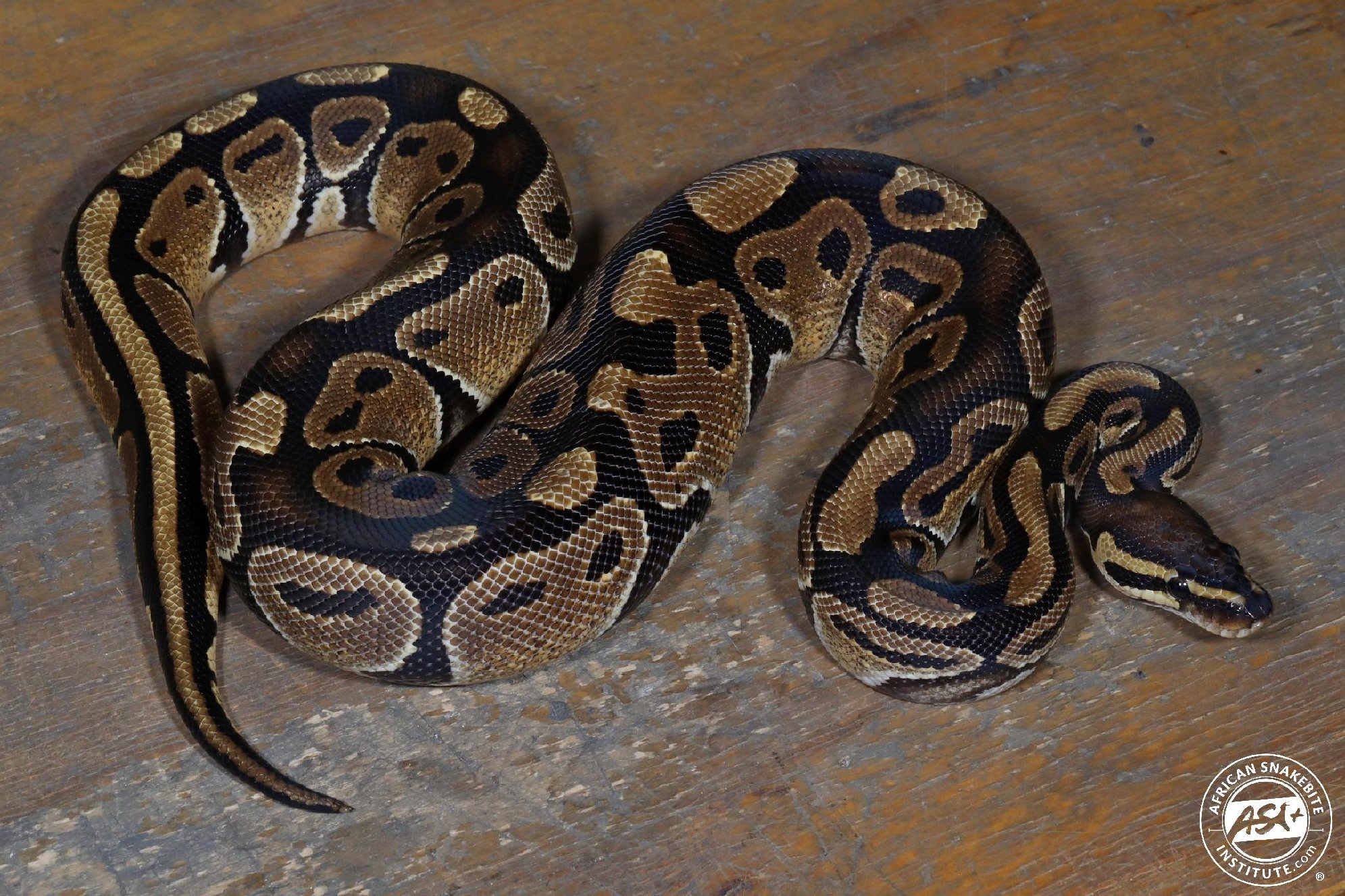 |
|
Ball Pythons are very common in the pet trade and some reports suggest around 6000 are smuggled out of West Africa largely destined for America.
|
|
Many of the older generation, including game rangers and most old field guides still refer to all pythons as African Rock Pythons but technically, that name refers to the snakes in Central, East and West Africa and the pythons in the south are Southern African Pythons. Identification is not easy between the pythons, especially the two larger species, but distribution is generally a good way of telling the two apart.
|
|
|
|
|
ASI Lite Combo 5
ASI Lite Combo 5 includes:
JM150 Snake Tong
Lite Snake Hook
First Aid for Snakebite Booklet
Safety Glasses for Spitting Snakes
Price R1625.00
|
|
|
| Order online here |
|
|
|
|
|
Our brand-new ASI Snake Booklets are here!
A big leap forward in local snake education.
We’ve released the first 95 booklets, each dedicated to a specific city or town in South Africa – and they’re all available as FREE PDF downloads from our website.
Inside each booklet, you’ll find:
• The snakes found in your area
• How to identify them
• Snakebite first aid
• Nearby hospitals
• Contact details for local snake removers
Start learning about the snakes in your town today!
Download the PDFs here: https://bit.ly/46MEbgz
|
|
|
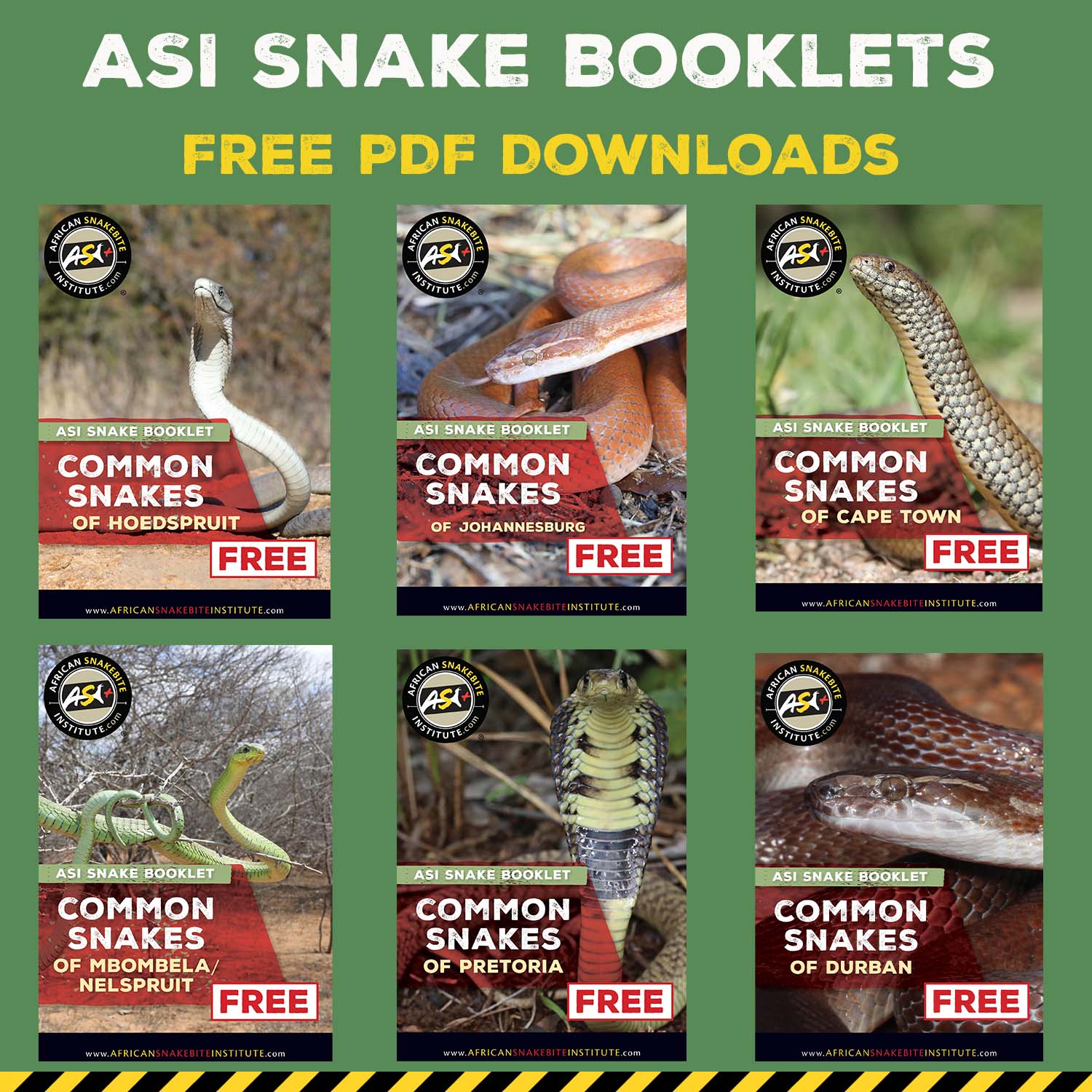 |
|
|
|
|
|
|
|
Rinkhals (Hemachatus haemachatus) are the only snake outside of the true cobras (Naja sp.) that can spit or project venom in self-defense. This technique works exceptionally well against predators and threats like dogs or humans. Watch more in the video below.
|
|
|
|
|
|
HOEDSPRUIT
LIMPOPO
Snake Awareness, First Aid for Snakebite and Venomous Snake Handling Course
Date: Saturday 18 October 2025
Venue: Southern Cross Schools, Hoedspruit, Limpopo
|
|
|
| Book here |
|
|
|
HOEDSPRUIT
LIMPOPO
Snake Awareness, First Aid for Snakebite and Venomous Snake Handling Course
Date: Sunday 19 October 2025
Venue: outhern Cross Schools, Hoedspruit
|
|
|
| Book here |
|
|
|
GANSBAAI
WESTERN CAPE
Snake Awareness, First Aid for Snakebite and Venomous Snake Handling Course
Date: Saturday 18 October 2025
Venue: Afrikanos, Gansbaai, Western Cape
|
|
|
| Book here |
|
|
|
GANSBAAI
WESTERN CAPE
Snake Awareness, First Aid for Snakebite and Venomous Snake Handling Course
Date: Sunday 19 October 2025
Venue: Afikanos, Gansbaai
Western Cape
|
|
|
| Book here |
|
|
|
WESTERN CAPE
KLAPMUTS
Snake Awareness, First Aid for Snakebite and Venomous Snake Handling Course
Date: Saturday 25 October 2025
Venue: Exotic Animal World, Klapmuts
|
|
|
| Book here |
|
|
|
WESTERN CAPE
KLAPMUTS
Venomous Snake Handling Bootcamp
Date: Sunday 26 October 2025
Venue: Exotic Animal World, Klapmuts
|
|
|
| Book here |
|
|
|
GAUTENG
MULDERSDRIFT
Snake Awareness, First Aid for Snakebite and Venomous Snake Handling Course
Date: Saturday 25 October 2025
Venue: Cradle Moon Lakeside Lodge, Muldersdrift
|
|
|
| Book here |
|
|
|
GAUTENG
MULDERSDRIFT
FREE Kids' Snake Awareness Session
Date: Saturday 25 October 2025
Venue: Cradle Moon Lakeside Lodge, Muldersdrift
|
|
|
| Book here |
|
|
|
GAUTENG
MULDERSDRIFT
Venomous Snake Handling Course
Date: Sunday 26 October 2025
Venue: Cradle Moon Lakeside Lodge, Muldersdrift
|
|
|
| Book here |
|
|
|
|
|
|
|
Johan Marais is the author of various books on reptiles including the best-seller - A Complete Guide to Snakes of Southern Africa. He is a popular public speaker and CEO of the African Snakebite Institute. The African Snakebite Institute (ASI) offers a variety of courses including Snake Awareness, Scorpion Awareness and Venomous Snake Handling. ASI is accredited by the International Society of Zoological Sciences (ISZS) and is a Travel Doctor-approved service provider. The courses are also accredited by the Health Professions Council of South Africa (HPCSA). ASI is the largest provider of quality snake handling and safety equipment in Africa!
|
 |
|
Copyright © 2025 African Snakebite Institute, All rights reserved.
Our mailing address is:
admin@asiorg.co.za
unsubscribe from this list
|
|
|
|
|